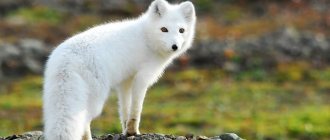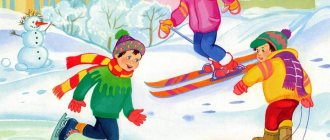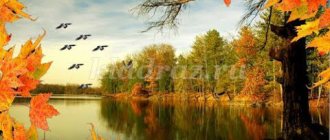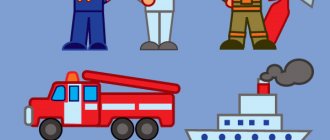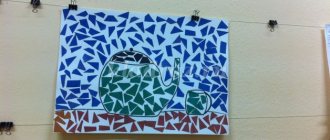Summary of educational activities on speech activity in the senior group “Our City”
Topic: “Our city”
Target:
Development of grammatically correct speech and speech creativity.
Tasks:
1. Learn to answer questions in complete sentences;
2. Teach children to select words for signs;
3. Activate children's vocabulary.
4. improve the monologue form of speech, the ability to compose stories using a mnemonic table.
5. Develop children’s coherent speech, teach children to tell stories based on graphic symbols, using mnemonics.
Progress:
Educator:
Guys, we have guests today, let's say hello! Hello. How did you feel when you came to kindergarten today? With good, joyful, cheerful. Let's hold hands and convey our good mood to each other.
All the children gathered around.
I am your friend and you are my friend.
Let's hold hands tighter
And let's smile at each other.
Educator:
Well done, I hope you are in a good mood for the whole day.
Educator:
Guys, I completely forgot about our guest. This is the Snowman. When I went to kindergarten, I met him at our door. He traveled around the cities and ended up in our city. Guys, let’s introduce him and tell him about our city. Do you agree?
Children:
Yes, we agree.
Educator:
Guys and you are a snowman, listen to the poem
There are countless cities on this big planet,
But there is only one native city in the world.
He is the most beloved, the most dear.
Where you were born is your hometown!
Educator:
What do you think this poem is talking about?
Children:
The poem talks about the city.
Educator:
Right. There are a lot of big and small cities in the world. And we will talk about our city.
Educator:
Each city has its own name. What is the name of the city in
which we live?
Children:
The city in which we live is called Vyazemsky.
Educator:
That's right, you and I live in a wonderful city called Vyazemsky.
Educator:
What are the people who live in Vyazemsky called?
Children:
People who live in our city are called Vyazemtsy
Educator:
Children, why is the city called “Vyazemsky”?
Children:
Our city is named after the engineer Orest Polienovich Vyazemsky
Educator:
That's right, the city is named after the engineer Orest Polienovich Vyazemsky, who headed the construction of the Ussuri Railway.
Educator:
Vyazemsky is our small Motherland. Children, what is the Motherland?
Children:
The place where we were born, where we live, where we go to kindergarten, where our mothers and fathers and friends live.
Educator:
Guys, let's say beautiful words about our hometown and give him a bouquet. Take the flowers from the table and go to the board. Place a flower in a vase and call it Vyazemsky?
Children:
Vyazemsky hometown, Vyazemsky cozy city,
(favorite, beautiful, quiet, noisy, green, clean, winter, sunny, crowded, sporty, modern, hospitable).
Educator:
There are many streets in our city. And each street has its own name. For example, I live on K. Marx Street, and you? And you are Snowman, what street do you live on? Let's tell the Snowman what streets there are in our city? (My street is called...) A ball game is being played. Children stand in a circle.
Children:
My street is called...Shkolnaya, Chapaeva, etc.
Educator:
Well done boys .
Educator:
The snowman liked to play, and I suggest playing the game “Say it the other way around.”
For example: long street - short street; narrow street - wide street; clean street - dirty street, ancient street - modern street, near street - distant street, light street - dark street, winter street - summer street, etc.)
Educator:
Well done guys, now let Snowman know what streets we have.
Educator:
The snowman asks, what is the name of the street where our kindergarten is located?
Children:
Our kindergarten is located on Chekhov Street 49
Educator:
Well done.
Educator:
Guys, you walk along familiar streets every day.
Educator:
let's show the Snowman a photo of our city. (Slideshow with photographs of the city).
Educator:
Guys, did you find out what kind of building this is?
Children:
this building is called the city clinic.
Educator:
What is it for?
Children:
To walk is treated.
Educator:
That's right, we go to the clinic for treatment.
Educator:
Who works at the clinic?
Children:
Doctors work at the clinic.
Educator:
But here is a building that preserves the history of our city. Who knows what it's called?
Children:
This building is called the Local History Museum
Educator:
Have you been to the museum? What did you see there?
Children:
Animals, exhibits.
Educator:
Is this building familiar to you?
Children:
This building is called Cinema
Educator:
Why do we go there?
Children:
To watch films, cartoons, fairy tales
Educator:
That's right, well done.
Educator:
What kind of building is this?
Children:
This building is called the House of Culture
Educator:
What did you see there?
Children:
Fairy tales, concerts.
Educator:
Here is another place familiar to you all in our city. What is this? Who recognized this beautiful two-story building?
Children:
This building is called administration
Educator:
That's right, this is the district administration building, the head of our district administration works there.
Educator:
Guys, do you recognize this place?
Children:
This building is called the Railway Station.
Educator:
That's right, this is the building of our railway station.
Educator:
Why do we need a railway station?
Children:
To go visit by train.
Educator:
What a wonderful city we have. There are schools and kindergartens, a museum and libraries, a green park and beautiful monuments. You can walk around your favorite city all day and admire its beauty.
Educator:
Guys, the Snowman offers to play a game.
Game "Continue the sentence"
I'll go to the park...to get some air. I will go to the cinema......To watch a movie I will go to the library......To borrow a book I will go to a music school......to learn to play the violin I will go to school......to study I will go to kindergarten......to play I'll go to the pharmacy.....to buy medicine I'll go to the store.....to buy groceries I'll go to the river.....to swim I'll go to the stadium.....to run
I'll go to the museum to... admire the animals.
Physical exercise.
This city. How tall he is! (holding hands, raise our hands up)
How many roofs and how many windows (show)
Our city is so big (arms to the sides)
It is cozy and alive (hug ourselves)
It sparkles and blooms (we show “lanterns” with our hands)
The city smiles (smiles at each other)
We really like it (they show the “class” sign with brushes).
Educator:
Now I invite you to tell us about our city. And to make the story interesting, a table will help you with this (mnemotables are displayed). Look at the table, think about what you will talk about.
Sample story: I live in the city of Vyazemsky. Many people live in Vyazemsky. Vyazemsky has many tall buildings, wide streets, many trees and flowers. Vyazemsky has museums, stadiums, and a park. My city is clean and beautiful. I love my hometown.
Children:
I live in Vyazemsky. My city is small, cozy, beautiful and clean. There are many schools in Vyazemsky, there is a museum, a library, and a cinema. I love my hometown very much.
Educator:
(addresses the Snowman) You see, Snowman, what a big and beautiful city we have. And it is called (all together) Vyazemsky. Don’t forget us, come visit us again, we will be glad. Really, guys?
Mnemotables DOCX / 2.3 MB
my city PPTX / 4.39 MB
Summary of the lesson in the senior group of the preschool educational institution “My city is my small Motherland”
- September 30, 2016
Purpose of the lesson: speech development, learning to compose stories about the small Motherland.
Tasks:
- disclosure of the concept of “city”;
- acquaintance with the native village, enrichment and expansion of knowledge about the memorable places of the village;
- determining the distinctive features of a village and a city;
- nurturing love for one’s native village;
- acquaintance with oral folk art through proverbs and sayings about the Motherland, native land.
Progress of the lesson
- Guys, let's imagine that today you and I are going on a trip. What do you think you should take with you when going on a long journey so as not to get lost? (Children's answers)
- That's right, you need to take a card. I decided to take this card. What do these dots represent on it? (Children's answers). Why are the dots different, big and small? (Children's answers).
– Do you know why a place where many people live is called a city? Let us say the word “city” slowly, and listen to this word.
the city in the ancient way : Moscow-grad, Chelyabinsk-grad. In ancient times, there were frequent wars over land. To protect themselves from enemies, people fenced themselves with high fences and then erected fortresses. Do you hear a familiar word in the words “fence”, “fenced”? (Children's answers).
Yes, the word is "city". Since then, the fenced area has been called a city. Thus, from the ancient word “hail” the modern word “city” was formed.
– There are many cities on our planet. Everyone has their own name, just like a person. Cities are young and old, noisy and calm. What cities have you visited? (Children's answers).
Where do you and I live? (Children's answers).
- That's right, in the village of Novogorny. Tell me, what is the difference between a village and a city? (Children's answers).
– Yes, they differ in size: the city is large, and the village is small. And in cities there are tall buildings - skyscrapers . Repeat “skyscraper” with me. These houses are so called because they rise above other houses, and it seems that the roof reaches the sky, that is, “scraping” the sky. Hence the name “skyscraper”.
– There are a lot of cars moving along the city streets, but in our village there are few.
– Also, a lot of people live in cities, but in our villages there are fewer.
– Guys, please tell us about our village. And so as not to forget anything during the story, I propose to draw up an outline of this story from the helper pictures. The first picture will indicate the name of our village.
– Based on the second beautiful picture, you will need to describe how beautiful our village is. The third picture will help you tell how beautiful our village is at any time of the year. Based on the last picture, tell us about your favorite place in our village.
(Listening to children's stories).
– Well done, you have some interesting stories! You and I are one big, friendly family living in the same village. They say about us that they are fellow countrymen. You and I love our hometown, our land. People have been glorifying their land for a long time. There are many proverbs and sayings about this. What proverbs and sayings do you know? (Children's answers).
- Everyone loves their native side
- Where someone is born, that’s where they will come in handy
- Houses and walls help
- Your own land is sweet in a handful
- You can even dream about your native land.
– Please name the main attractions of our village.
– What kind of plant do we have?
– What enterprises do the residents of our village work at?
- Well done, we will love our native village, take care of its purity and beauty. And now I propose to draw your favorite places in the village.
Summing up: children can talk about their hometown, try to come up with a short story on a given topic; able to use simple symbols and diagrams.
Author: Teacher of the senior group of kindergarten Elovik Tatyana Aleksandrovna, Novogorny village.
Summary of educational activities for speech development in the middle group “My City”
Natalia Kozlova
Summary of educational activities for speech development in the middle group “My City”
AUTHOR: KOZLOVA N.V.
PROGRAM CONTENT: Clarify children's ideas about their hometown , its name, some attractions, their home address (street, kindergarten address. Consolidate children's knowledge of traffic rules and behavior on the street. Practice the formation of adjectives, activate children's vocabulary.
MATERIAL: Illustrations of the city , models, red and green chips, a picture of a house, geometric shapes (triangle, square, circle, rectangle, ball, pictures with wild and domestic animals, photos of city .
PROCEDURE: The teacher reads a poem about his hometown . Children, what did I read the poem to you about? ( city )
What is the name of our
city ? (Petrozavodsk)
Or maybe someone knows the names of the people who live in our
city ? (Petrozavodsk residents)
Petrozavodsk is our small Motherland.
Here you and I were born, live, go to kindergarten (study, play, ....)
- Now tell me, WHAT IS OUR CITY ? (beautiful, bright, wonderful, northern, cozy, large, clean, snowy, wonderful, ancient, huge, main, comfortable, majestic)
— Game “WHAT IS IN
THE CITY ” (I use illustrations about my hometown
and models ) You need to answer with a sentence (
there are a lot of people , streets, roads, traffic lights, road signs, buildings, houses in the city)
— Game “DO-DO NOT”
(what you can what to do on the
city , and what not to do) The teacher names the rules, and the children must show a chip of the desired color. Red chip – no, green chip – yes.
1. Cross the street at a red light. 2. Admire the blooming flowerbed. 3. Pick flowers in the flowerbed. 4. Plant flowers, trees, bushes. 5. Throw candy wrappers on the road. 6. Cross the street when the light is green. 7. Screaming, making noise in public places. 8. Talk calmly.
— Game “NAME IT TENDINGLY”
(
city-town , street-street, courtyard-courtyard, square-square, garden-garden, address-address, station-station, tree-tree, shop-shop) -
FISMINUTKA.
— The teacher asks the children a riddle about the street.
1. WHAT ARE THERE ARE STREETS? (long, wide, narrow, light, dark, winding)
2. WHAT IS BUILT ON THE STREETS? (Houses)
3. WHAT ARE THE HOUSES IN OUR CITY ? (multi-story, high, low, single-story)
THERE ARE DIFFERENT HOUSES (high, low, preschool, medical, shopping, educational, residential)
— Game “WHAT HAS AT HOME”
We show the children a picture of a house and ask: “What does the house have?”
You need to answer with a sentence
(The house has....)
Roof, walls, floor, ceiling, doors, stairs, bell, peephole, windows, basement, attic, lock, antenna.
- Game “WHAT CAN A HOUSE OF THIS SHAPE HAVE”
(square, triangle, circle, rectangle)
The teacher shows a geometric figure, and the children must name what a house of this shape has. For example: TRIANGLE - roof; CIRCLE - window, peephole in the door; SQUARE – floor, ceiling, frames; RECTANGLE - door, pipe, window, frames, balcony.
— THERE ARE DIFFERENT HOUSES:
1. What do we call a brick house? (BRICK)
2. House made of wood?
(WOODEN)
3. House made of stone?
(STONE)
4. House made of panels?
(PANEL)
5. Concrete house?
(CONCRETE)
6. House made of glass?
(GLASS)
7. House made of straw?
(STRAW)
– Game “NAME THE ANIMAL’S HOUSE”
Animals also have their own home. Name the house of a squirrel (HOOL), fox (HOLE, hare (UNDER A BUSH), wolf (LAIR, bear (DEN), dog (BOARD, KENNEL)
.
Children, where do they usually build houses? (on the street)
That's right, there are many streets in our
city and each street has its own name.
Do you know what street our d/s is located on? your street? — Game “NAME YOUR STREET”
, You must answer with a sentence
(I live in Rovio....)
- Game “DISCOVER THE PHOTO”
,
There are many beautiful places and attractions in our city. Tell us about the landmark in your photo. You must answer with a sentence (I am next to the ETERNAL FIRE)
.
city well .
